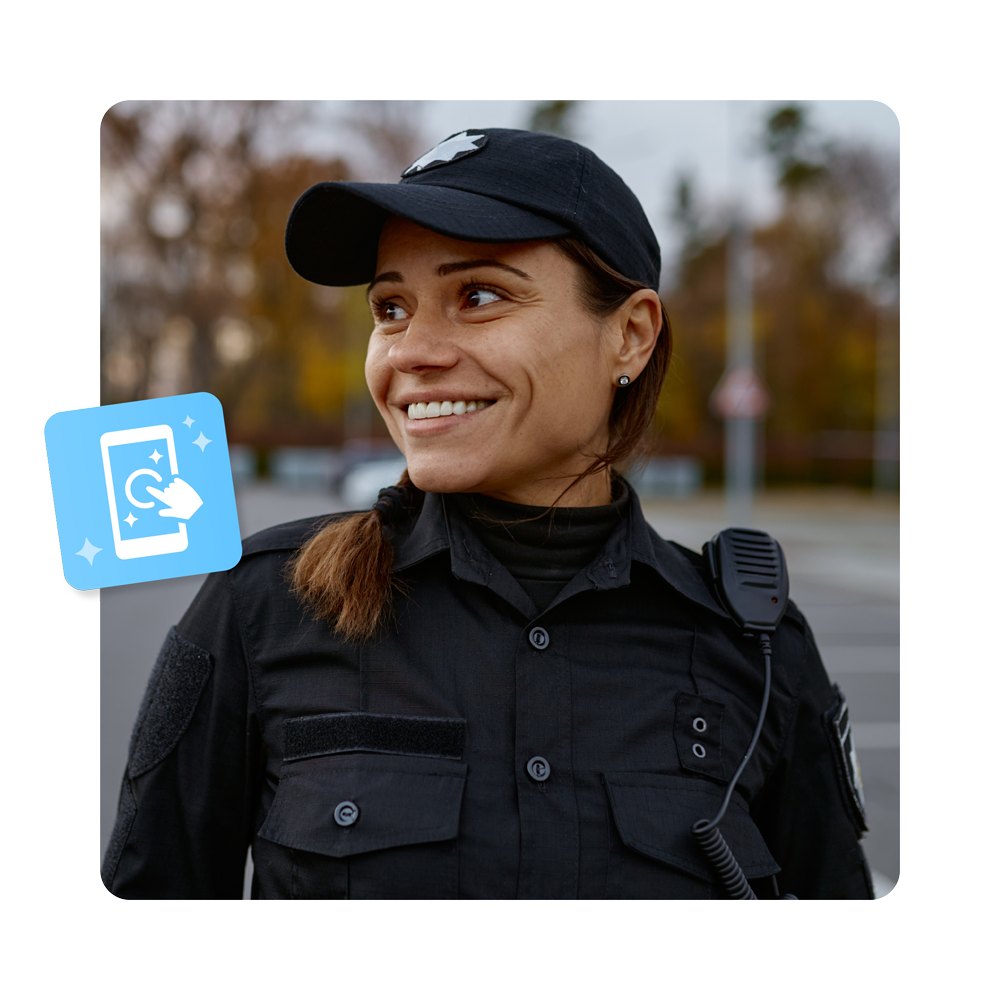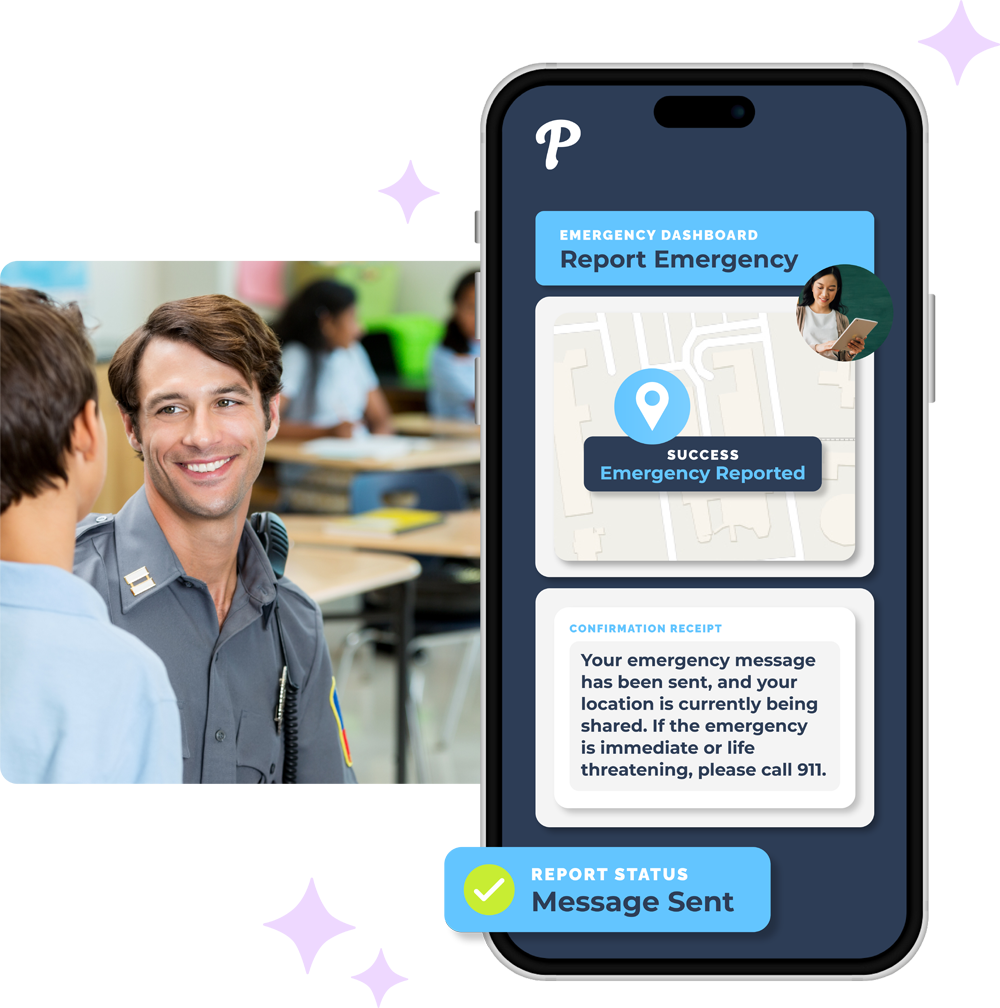Don’t have time to read the blog, listen now!
School safety has never been more critical. Emergencies can happen without warning, and the difference between chaos and calm often depends on preparation and communication. In today’s connected world, a school emergency alert system is no longer optional—it’s essential. Ultimately, these systems empower schools to respond quickly, keep everyone informed, and ensure help arrives when it’s needed most.
From manual intercom announcements to smart alert automation, campuses have come a long way. Modern emergency alert systems combine mobile apps, AI-driven dashboards, and multi-channel notifications to ensure instant communication across staff, students, and first responders. They bring the reliability schools need to handle critical moments with confidence.
This guide explores what a school emergency alert system is, how it works, and what features make it indispensable for modern campuses. Whether your goal is faster response, stronger coordination, or better compliance, understanding these systems is key to building a safer school community.
1. Introduction to School Emergency Alert Systems
So, what is a school emergency alert system? Simply put, it’s a technology-driven communication platform designed to manage critical events like lockdowns, weather emergencies, or intruder alerts. It instantly notifies the right people—teachers, staff, students, parents, and first responders—through connected devices.
The importance of school safety continues to grow. According to the National Center for Education Statistics, incidents requiring lockdowns or evacuations have risen dramatically in recent years. Schools can no longer rely on outdated phone trees or intercom messages. They need automation, mobility, and real-time coordination.
Digital transformation has redefined school emergency management. Platforms like Pikmykid have modernized communication, enabling staff to trigger instant alerts from a smartphone or tablet. Whether through a panic button system, cloud-based dashboard, or integrated app, these systems ensure information flows quickly and accurately.
Overall, emergencies such as natural disasters, intruders, or medical incidents require rapid, clear communication. A school emergency alert system bridges the gap between awareness and action. It transforms isolated responses into coordinated safety operations, ensuring every second counts.
2. How an Emergency Alert System Works: Key Components and Processes
Understanding how these systems operate is crucial. A school emergency alert system functions through a combination of mobile technology and cloud-based management. The process begins with alert initiation, which can occur through mobile panic button apps or wearable devices.
Once triggered, the system activates automated workflows. Alerts are sent across multiple channels—SMS, push notifications, and email—to ensure everyone receives the message instantly. This multi-channel communication prevents information gaps, especially when connectivity varies across devices.
A well-designed platform integrates with existing school systems. It can connect to student information systems, visitor management logs, or digital hall pass software to improve accuracy during emergencies. For example, if a visitor remains on campus during a lockdown, integration ensures their presence is immediately known to staff and first responders.
Geo-targeting is another core function. Instead of broadcasting a generic message, the system sends location-based alerts to those directly affected. This precision ensures messages are relevant and actionable.
Ultimately, a school emergency alert system creates a unified flow of information—automating response processes, eliminating confusion, and improving coordination between people and systems.
3. Benefits of an Automated Emergency Alert System for Schools
The impact of a school emergency alert system reaches every stakeholder on campus.
For Teachers and Staff:Empty heading
Automation simplifies complex decisions during stressful situations. One-tap alerts enable immediate lockdowns or evacuations. Clear, predefined workflows reduce confusion and ensure every staff member follows the same safety plan.
For Students:Empty heading
Real-time school emergency notifications foster a greater sense of security. Clear instructions during drills or real incidents help minimize panic and keep students calm.
For Parents:Empty heading
A parent notification system during school emergencies builds trust. Instant updates replace uncertainty, giving families accurate information and reassurance in critical moments.
For Administrators and District Leaders:Empty heading
A centralized dashboard provides full visibility across campuses. It streamlines compliance reporting and incident documentation while integrating directly with local authorities and emergency responders. This unified system saves time, supports coordination, and simplifies accountability.
From everyday incidents to large-scale emergencies, automated alerts enable faster, smarter responses that protect everyone involved.
4. Common Challenges in Traditional Emergency Communication
Before digital systems, emergency communication relied on manual calls, announcements, or emails. These outdated methods often introduced dangerous delays. A school emergency alert system eliminates many of these challenges by automating delivery and removing dependency on a single communication channel.
Traditional communication systems face several recurring issues:
- Delays caused by manual phone trees or intercom announcements
- Miscommunication during high-stress scenarios
- Limited reach to off-campus staff, parents, or emergency responders
- Lack of centralized data for analysis or compliance
- When emergencies occur, every second matters. Manual methods simply can’t match the speed, accuracy, or consistency of an automated solution.
5. Types of School Emergency Alert Systems
Not all alert systems are created equal. Understanding the main types helps schools choose what best fits their needs.
1. Mobile App–Based SystemsEmpty heading
These systems allow instant alerts from smartphones or tablets. They support geo-tagging, real-time messaging, and communication. Platforms like Pikmykid provide intuitive apps that empower teachers and staff to respond from anywhere.
2. Hardware-Based SystemsEmpty heading
Traditional panic buttons, PA systems, or wired alarms fall into this category. While reliable, they lack scalability and flexibility for multi-campus environments.
3. Cloud-Based PlatformsEmpty heading
A cloud-based school emergency alert system centralizes management across multiple schools. It provides automatic updates, real-time analytics, and broad scalability—all accessible from secure dashboards.
4. Integrated Safety SuitesEmpty heading
These combine several safety tools into one platform like Pikmykid—visitor management, dismissal tracking, digital hall passes, and emergency notifications. This all-in-one approach simplifies safety management while ensuring consistent communication.
5. AI-Powered and Predictive SystemsEmpty heading
Emerging technologies use machine learning to analyze risks and automate alerts. AI-powered alert management for K-12 can detect potential threats before they escalate, supporting proactive prevention rather than reactive response.
Each type has advantages, but the most effective solutions are often hybrid systems—combining mobility, cloud access, and integration for maximum flexibility.
6. How to Choose the Right Emergency Alert System for Your School
Selecting the right school emergency alert system depends on your district’s size, infrastructure, and goals. Scalability is key. A strong platform should support growth across campuses without requiring extensive new hardware.
Ease of use is equally important. Teachers and staff need to send alerts quickly, even under stress. Look for intuitive interfaces and customizable templates for different emergency types.
Integration is another essential factor. The best emergency alert software for schools connects with attendance systems, dismissal apps, and visitor management platforms. This integration strengthens situational awareness and eliminates blind spots.
Compliance should also be a priority. Systems that meet Alyssa’s Law and align with FERPA and COPPA standards ensure student data privacy while maintaining safety.
When comparing vendors, evaluate customer support, onboarding programs, and drill features. The ability to simulate emergencies and train staff regularly builds confidence and readiness.
Ultimately, the right school emergency alert system is one that aligns technology, people, and process into a cohesive safety network.
7. Best Practices for Implementing an Emergency Alert System
Even the most advanced system is only as effective as its implementation. Schools adopting a school emergency alert system should start by conducting a safety audit. Identify communication gaps, existing workflows, and areas needing improvement.
Next, define clear protocols for each emergency scenario—fire, lockdown, medical, weather, or evacuation. Assign roles and ensure every staff member knows how to trigger and respond to alerts.
Training is essential. Regular drills help staff become familiar with system features and decision-making processes. Repetition reduces hesitation and improves coordination.
After drills or incidents, review analytics. Most modern platforms offer detailed reports on alert speed, reach, and acknowledgment rates. These insights help refine safety plans over time.
Finally, don’t forget families. A strong parent notification system during school emergencies keeps parents informed, reduces panic, and strengthens trust in the school’s emergency preparedness strategy.
Implementing these best practices transforms emergency response from reactive to proactive—building a foundation of readiness and confidence.
8. The Future of School Safety: AI, Automation, and Connected Platforms
The future of campus safety lies in automation, connectivity, and intelligence. A school emergency alert system will increasingly rely on AI and predictive analytics to identify potential risks before they become incidents.
AI-driven tools can analyze data from systems, like attendance and visitor management to detect unusual patterns. For example, predictive alerts might identify repeated hall pass requests at the same time of day every Friday, indicating a potential issue or risk on campus.
Automation ensures alerts reach every stakeholder instantly through multiple channels—SMS, app notifications, and even wearable devices. Integration with first responder networks will continue to evolve, ensuring faster coordination during emergencies.
Connected safety platforms are also emerging. These systems unite various tools—dismissal automation, visitor management, panic button systems, and parent notifications—under one ecosystem. Platforms like Pikmykid are leading this transformation by providing a multi-channel emergency communication system that simplifies management and strengthens response.
In the coming years, mobile-first safety solutions will become the standard. Emergency alert apps for teachers and staff will serve as the command center for communication and coordination. Combined with predictive analytics and AI-driven insights, schools will move from responding to emergencies to preventing them.
Empowering Your Campus with Confidence
Every school deserves tools that protect its community with speed and precision. Investing in a school emergency alert system is an investment in preparedness, accountability, and peace of mind.
These platforms help teachers act faster, administrators make informed decisions, and parents stay connected in real time. They turn uncertainty into confidence and replace confusion with coordinated action.
To learn more about how smart alert systems fit into a broader safety strategy, explore how platforms like Pikmykid are connecting emergency alerts with daily operations—from dismissal management to visitor tracking.
When technology, training, and trust come together, schools create environments where safety supports learning instead of interrupting it. The right emergency communication platform doesn’t just protect people—it strengthens communities built on confidence, care, and readiness.



